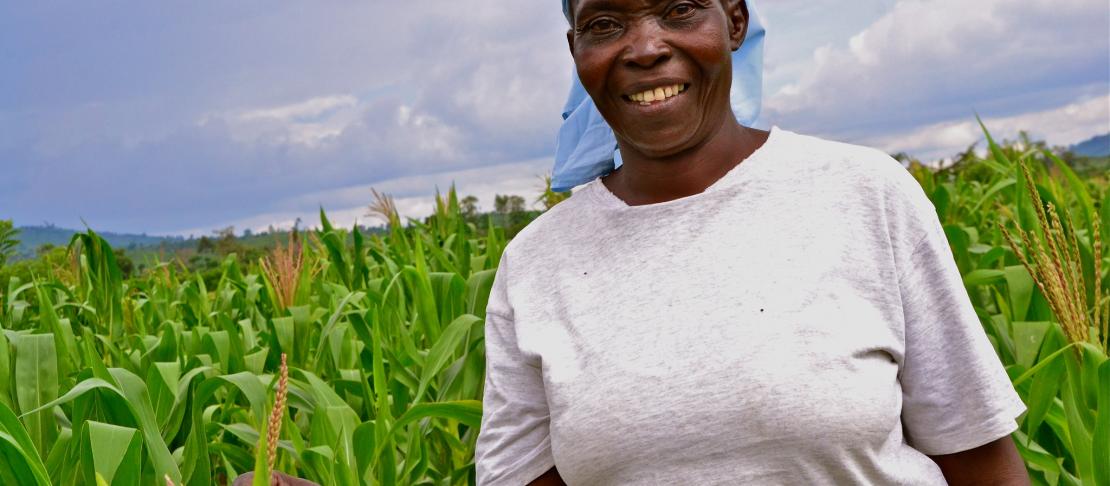County level climate risk profiles guide USD 250 million investment in Kenya

Summary
Agriculture represents a large part of Kenya’s gross domestic product (GDP). The International Center for Tropical Agriculture (CIAT) and the CGIAR Research Program on Climate Change, Agriculture and Food Security (CCAFS) developed a national climate-smart agriculture (CSA) profile for the World Bank and the government, which contributed to the design of the Kenya Climate-Smart Agriculture Project (KCSAP). The climates and farming situations vary greatly across Kenya. To set priorities within the country, the World Bank asked CIAT and CCAFS to develop a set of more context-specific county-level climate risk profiles. These helped to guide the USD 250 million investment of the World Bank in KSCAP.
Background
Agriculture is central to Kenya’s economy, constituting 28% of the GDP and accounts for 65% of its export earnings, according to the World Bank. The sector relies predominantly on small-scale farmers with limited access to inputs, irrigation and markets. As a result, the productivity of many staple crops are below regional averages and is extremely vulnerable to increasing temperatures, droughts, and floods. Two extreme climate events evidenced this, when the 1998 El Niño and the 2009 drought led to a combined agricultural loss of USD 2.8 billion according to the Kenyan government.
In this context, the Kenyan government set up the KCSAP, for which the World Bank has committed USD 250 million in funding. This project aims to increase agricultural productivity, build resilience to climate change risks among small-scale farmers and provide an effective response in the event of a crisis or emergency. In its design, the project relied on the national CSA profile of Kenya that CIAT and CCAFS had developed for the World Bank.
Climates and farming situations vary greatly across Kenya. To set priorities in specific contexts, the World Bank asked CIAT and CCAFS to also develop a climate risk profile for each of the 24 Kenyan counties. These profiles provide a subnational analysis of the underlying causes of vulnerability, ongoing adaptation strategies and existing off-farm services, and recommends potential adaptation options. The profiles also synthesize the policy, institutional and governance context, so that effective institutional capacities can be built to redress future climate risks. As such, the climate risk county profiles contributed to guide the USD 250 million investment of the World Bank in the CSA project for Kenya.
Key facts
- Kenyan smallholder farmers lack inputs and irrigation, which makes them particularly vulnerable to climate change.
- The World Bank has committed USD 250 million of investment for KCSAP.
- CIAT and CCAFS developed 24 county-level climate risk profiles to help prioritize and guide investments to specific contexts.
Lessons: Key elements of success
- CSA country profiles can facilitate the design of national CSA projects, such as KCSAP.
- Effective implementation of national CSA projects relies on sub-national prioritisation and implementation. The sub-national climate risk profiles help prioritize and guide investments to specific contexts.
Further reading
- 2016 Annual Report story: CCAFS research helps shape US$350M investment in climate-smart agriculture in Niger and Kenya
- World Bank project description: Kenya Climate Smart Agriculture Project
- World Bank video: Climate-Smart Farming Helps a Community in Kenya Thrive in the Face of Climate-Change
- Website page: Climate-Smart Agriculture Prioritization Framework
Related research outputs
- Book chapter: Climate-Smart Agricultural Value Chains: Risks and Perspectives
- Book chapter: Uptake of Resilient Crop Interventions to Manage Risks Through Climate-Smart Villages Approach in Nyando, Western Kenya.
- Journal article: Prioritising climate-smart agricultural interventions at different scales
- Country profile: Climate-Smart Agriculture in Kenya
- Publication series: Kenya county climate risk profiles


